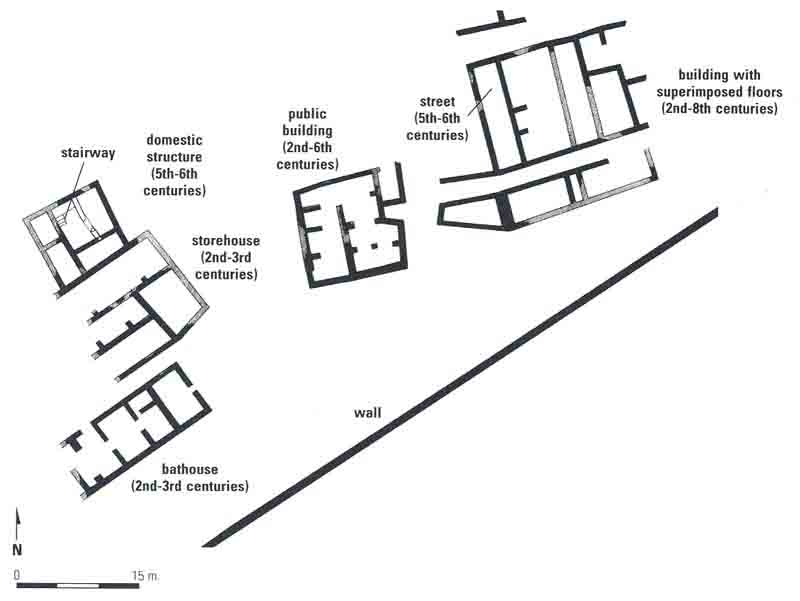Image Details

The plan shows the Roman and Byzantine structures excavated on the Greek Orthodox property at Capernaum. (The thick black line represents the wall separating the Greek Orthodox and Franciscan sides.) At lower left is a second- to third-century A.D. bathhouse (see photo); above it is a large public building, perhaps a storehouse, dating to the same period. The northernmost building at left dates to the Byzantine period (fifth-sixth century A.D.); though a domestic structure, it housed a small industry involving Murex shells (see photos). The building at center continued in use well into the Byzantine period (fifth-sixth centuries A.D.) and contained a human burial underneath its floor. Its large size indicates a public building of some sort, but its function remains unknown. The very large building at right was used from the late Roman period (second-third centuries A.D.) through the early Arab period (seventh-eighth centuries) and contained several superimposed floors (see photo). During the Byzantine period a street ran along this building’s west side.
